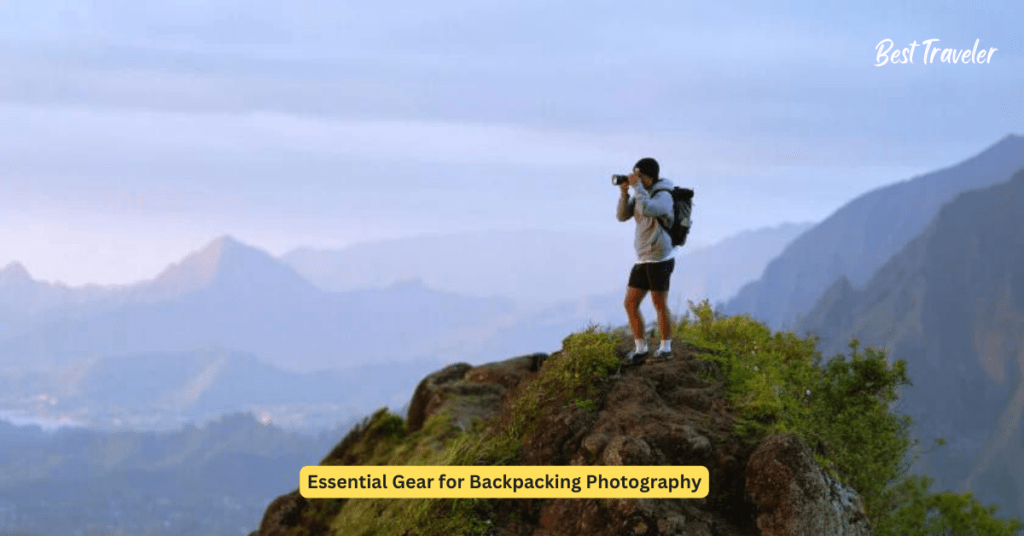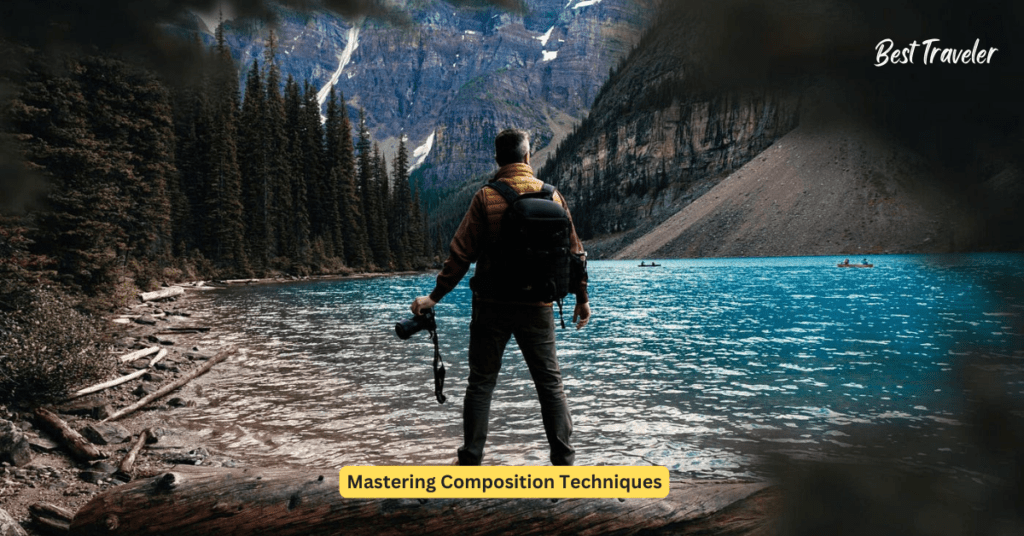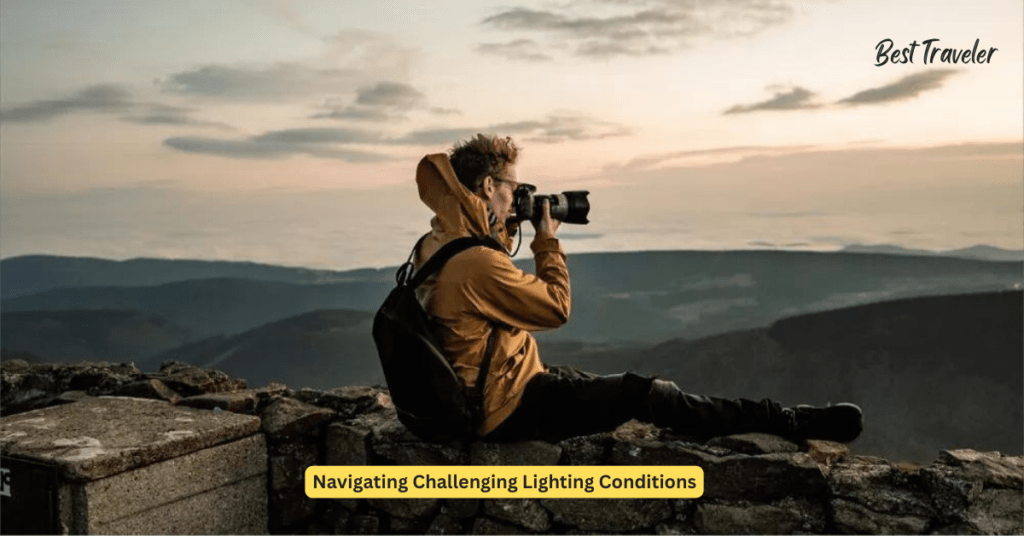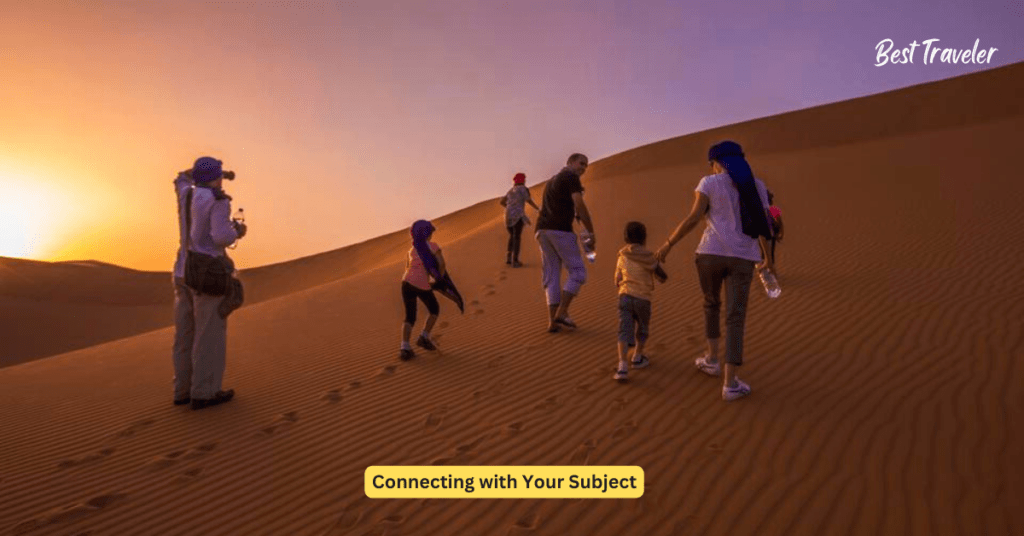Introduction
Backpacking is more than just a way to travel; it’s an adventure that opens up a world of possibilities for exploration and discovery. Whether you’re trekking through lush forests, scaling towering mountains, or traversing sandy deserts, each step you take offers a new opportunity to capture breathtaking moments through the lens of your camera.
Essential Gear for Backpacking Photography

When venturing into the wilderness on a backpacking expedition, every ounce of weight matters. Therefore, it’s crucial to carefully select gear that strikes the perfect balance between functionality and portability. Here are some essential items to consider packing for your backpacking photography escapade:
- Camera Body: Opt for a lightweight and compact camera body that doesn’t compromise on image quality. Mirrorless cameras are a popular choice among backpacking photographers due to their smaller size and excellent performance.
- Lenses: Choose versatile lenses that cover a range of focal lengths to accommodate different shooting scenarios. A wide-angle lens is ideal for capturing expansive landscapes, while a telephoto lens allows you to zoom in on distant subjects such as wildlife or distant mountain peaks.
- Tripod: While it adds weight to your pack, a sturdy and lightweight tripod is indispensable for achieving sharp images, especially in low-light conditions or when shooting long exposures.
- Extra Batteries and Memory Cards: Ensure you have an ample supply of batteries and memory cards to keep shooting without interruptions. The last thing you want is to miss out on capturing a spectacular moment due to a drained battery or full memory card.
Mastering Composition Techniques

Composition plays a pivotal role in creating visually compelling images that resonate with viewers. Whether you’re photographing majestic mountain vistas or intimate campfire scenes, employing effective composition techniques can elevate your photos from ordinary to extraordinary.
- Rule of Thirds: The rule of thirds is a fundamental principle of composition that involves dividing the frame into a grid of nine equal sections using two horizontal and two vertical lines. Place key elements of interest along these grid lines or at their intersections to create a balanced and visually appealing composition.
- Leading Lines: Incorporate leading lines such as trails, rivers, or tree branches to guide the viewer’s eye towards the main subject of your photo. Leading lines add depth and dimension to your images, drawing viewers into the scene and creating a sense of immersion.
- Foreground Interest: Including a prominent foreground element adds depth and context to your images, leading to a more dynamic composition. Look for interesting foreground elements such as rocks, wildflowers, or textured terrain to anchor your photos and provide visual interest.
- Negative Space: Embrace negative space to give your subject room to breathe and create a sense of balance within the frame. Negative space can evoke feelings of solitude, tranquility, or vastness, depending on the context of your composition.
Navigating Challenging Lighting Conditions

Lighting plays a critical role in photography, influencing the mood, atmosphere, and overall quality of your images. When backpacking in diverse environments ranging from dense forests to harsh desert landscapes,
- Golden Hour: Take advantage of the soft, warm light during the golden hour, which occurs shortly after sunrise and before sunset. The golden hour bathes the landscape in a magical glow, casting long shadows and adding warmth and depth to your photos.
- Diffuse Light: On overcast days or in shaded areas, the diffuse light creates soft, even illumination that is ideal for photographing portraits, flowers, and other detailed subjects. Embrace cloudy skies as an opportunity to capture intimate moments without harsh shadows or blown-out highlights.
- Backlighting: Experiment with backlighting to create dramatic silhouettes and add visual interest to your images. Position your subject in front of a light source such as the sun or a campfire and adjust your exposure settings to achieve striking silhouettes against the glowing background.
- HDR Photography: High Dynamic Range (HDR) photography involves capturing multiple exposures of the same scene at different exposure levels and blending them together in post-processing to achieve balanced exposure throughout the image. HDR is particularly useful for capturing scenes with extreme contrast between light and shadow, such as sunrise or sunset landscapes.
Connecting with Your Subject

Incorporating a human element into your backpacking photography adds depth, emotion, and storytelling to your images. Whether it’s a fellow adventurer, a local guide, or even yourself, including people in your photos can evoke a sense of scale and perspective, allowing viewers to connect on a deeper level with the landscape and the adventure unfolding within it. Here are some tips for effectively incorporating a human element into your backpacking photography:
- Environmental Portraits: Capture portraits of fellow backpackers immersed in the natural environment, surrounded by towering mountains, dense forests, or vast desert landscapes. Environmental portraits provide context and scale, highlighting the grandeur of the wilderness and the spirit of adventure.
- Candid Moments: Embrace spontaneity and capture candid moments of laughter, camaraderie, and shared experiences among your travel companions. Candid shots convey authenticity and emotion, allowing viewers to feel like they’re right there with you on the journey.
- Self-Portraits: Don’t be afraid to turn the camera on yourself and capture self-portraits that document your personal connection to the landscape. Utilize remote shutter releases, timers, or smartphone apps to trigger the shutter while you explore epic vistas or conquer challenging trails.
- Storytelling Through Gestures: Use body language, gestures, and expressions to tell a compelling story within your photos. Whether it’s a triumphant fist
Conclusion & Recap
As we conclude our journey through the world of backpacking photography, remember that the true essence of adventure lies not only in the destinations we explore but also in the moments we capture along the way. By applying the knowledge and techniques shared in this guide, you’ll be well-equipped to embark on your next backpacking adventure with confidence, knowing that you have the tools to capture stunning images that preserve the memories and experiences of a lifetime.
Also Read:
Frequently Asked Questions (FAQs)
What camera gear is best for backpacking photography?
When selecting camera gear for backpacking photography, prioritize lightweight and versatile equipment. Consider mirrorless cameras for their compact size and excellent performance. Opt for lenses that cover a range of focal lengths to accommodate different shooting scenarios, and don’t forget essential accessories like tripods, extra batteries, and memory cards.
How can I improve my composition skills for backpacking photography?
Improving composition skills involves understanding fundamental principles such as the rule of thirds, leading lines, and negative space. Practice framing your shots using these techniques to create visually compelling images. Experiment with different perspectives and angles to find unique compositions that tell a story and evoke emotion.
How do I navigate challenging lighting conditions while backpacking?
Navigating challenging lighting conditions requires adaptability and creativity. Take advantage of the soft, warm light during the golden hour for stunning landscape photos. Experiment with backlighting and HDR photography to capture scenes with extreme contrast. Additionally, using reflectors can help redirect and enhance natural light in shaded or low-light environments.
What are some tips for incorporating a human element into backpacking photography?
Incorporating a human element adds depth and storytelling to your photos. Capture candid moments of laughter and camaraderie among fellow backpackers, or document your personal connection to the landscape through self-portraits. Respectfully engage with local culture when traveling abroad, and seek to include indigenous people and traditions in your photos with their permission.
How can I protect my camera gear while backpacking?
Protecting your camera gear while backpacking is essential to ensure its longevity and performance. Invest in a weatherproof camera bag to shield your equipment from the elements. Consider using lens filters to protect your lenses from scratches and damage. Always pack your gear securely and use caution when navigating rugged terrain to prevent accidental damage.
What post-processing techniques can enhance backpacking photos?
Post-processing techniques such as color correction, exposure adjustments, and sharpening can enhance the visual impact of your backpacking photos. Experiment with software tools like Adobe Lightroom or Photoshop to fine-tune your images and bring out the best in your compositions. However, strive to maintain a balance and preserve the authenticity of the original scene.
How do I balance capturing moments with enjoying the backpacking experience?
Finding a balance between capturing moments and enjoying the backpacking experience is essential for creating meaningful memories. Prioritize being present in the moment and immersing yourself in the sights, sounds, and sensations of the wilderness. Take breaks from photography to savor the experience without the distraction of the camera, and trust that the memories you create will be just as vivid as the photos you capture.

